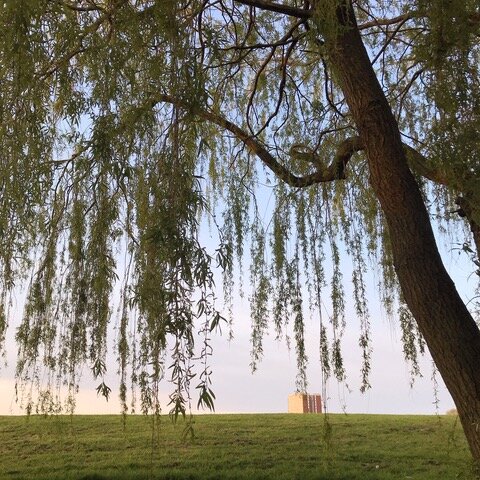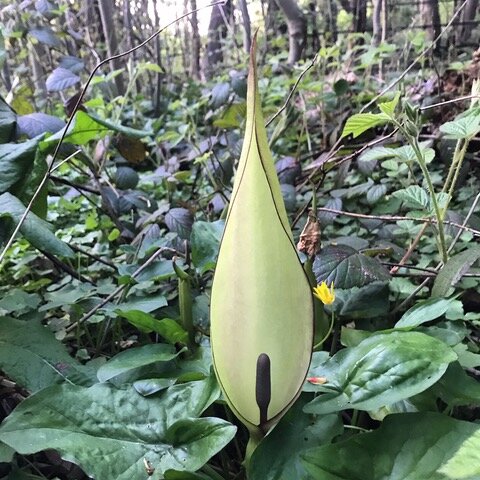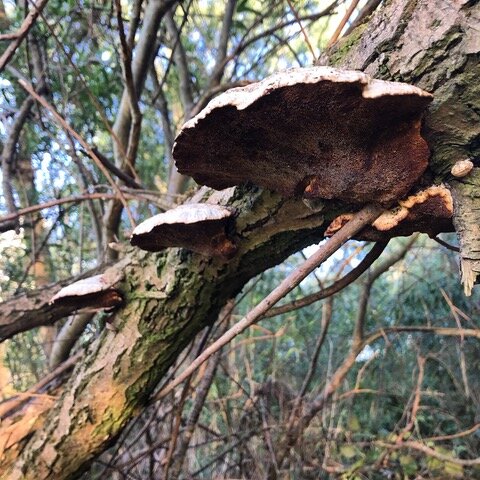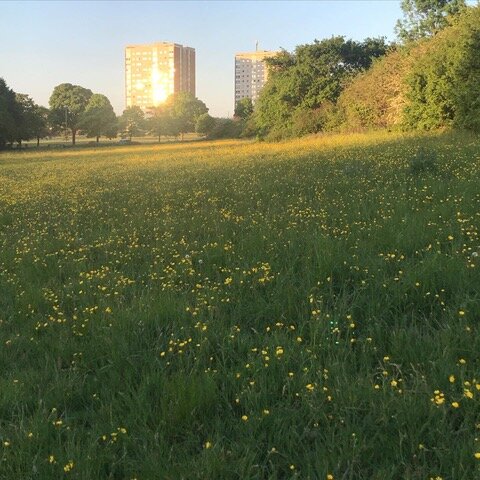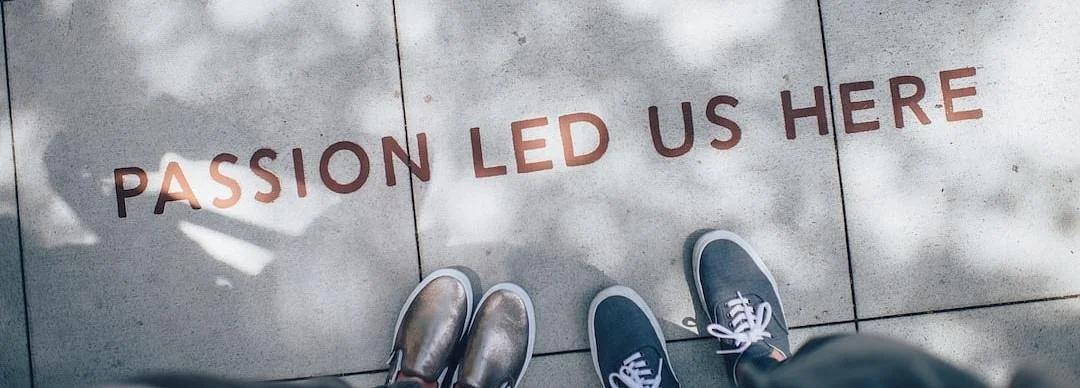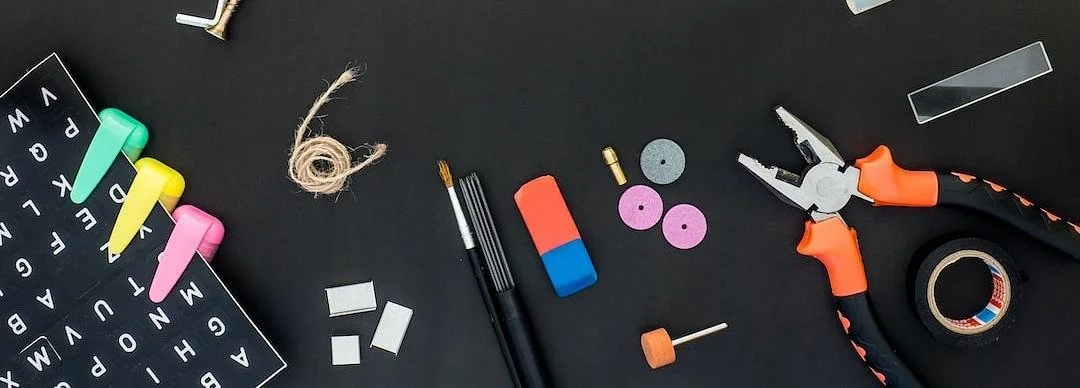Enacting Kinaesthetic Practice in East Leeds
By
Kerry Harker
Image description: colour photograph, exterior. The top of a block of flats, ‘Parkway Towers’, peeks out above some tall trees. The sky is blue. Photo credit: Kerry Harker.
Published in September 2021 as part of the extended digital edition of Social Works? Open journal…
In her wide-ranging, extended essay on our multiple senses of place The Lure of the Local, American art writer Lucy Lippard suggests that artists have a unique role to play in critical explorations of place-specificity:
“The potential of an activist art practice that raises consciousness about land, history, culture, and place and is a catalyst for social change cannot be underestimated, even though this promise is yet to be fulfilled. Artists can make the connections visible. They can guide us through sensuous kinesthetic responses to topography, lead us from archaeology and landbased social history into alternative relationships to place. [my italics] [1]”
In this short text I consider how social practice artists might harness Lippard’s ‘kinaesthetics’ as a form of knowledge production to be generated collectively with the land and those who live there. Kinaesthesis [kinesthesis in American English] is ‘the sensation that is stimulated by movements of the body or parts of the body and is mediated by [receptors] in the vestibular system and in the muscles, tendons, and joints’. [2] The vestibular system is a set of organs in the inner ear that ‘[provide] us with our subjective sense of movement and orientation in space’. [3] The etymology of the word kinaesthesis stems from the Greek kineein (to move) and aisthesis (sensation). [4] I find these concepts relevant and useful for thinking through how an activist art practice might facilitate collective explorations of specific places in order to reveal what structures them and in doing so to create the conditions for enacting locally-led, positive change.
One such place is the Wyke Beck Valley that provides a focal point for the East Leeds Project, an organisation that I founded in 2017 and now co-direct with Claire Irving, which works with art as a social action. [5] Running north to south through East Leeds, the Valley’s central area constitutes a string of interconnected green spaces—municipal playing fields, allotments, meadows and small woodlands—that carve a path between the vast 1930s housing estates at Gipton and Seacroft. Since the beginning of the Covid-19 pandemic a year ago, the paths that wind along the Valley from our base in Gipton have become increasingly important spaces for walking together as a way to continue conversations with the people we work with while observing social distancing guidelines. Borne of necessity, this developing practice has begun to shape ambitions for a programme of artist-led group explorations in the future, working with the local community that we are also both part of as long-term residents.
As Lippard further suggests, ‘The land, and even the spirit of the place, can be experienced kinetically, even kinesthetically, as well as visually’. [6] To walk the Wyke Beck Valley is to become acutely aware of all one’s senses: to feel the wind that whips across the exposed playing fields in Winter, or to inhale the reek of wild garlic that carpets the woodlands in Spring. In every season there is the constant babbling of the beck itself as it tumbles inexorably south before being swallowed up by the River Aire at Skelton. To walk the Valley is to pass through relatively new neighbourhoods characterised as ‘deprived’ by some, while simultaneously retreading the steps of human settlers who were present here over three thousand years ago.
Following Lippard, I wonder how setting out to walk these routes together, side by side rather than face to face in the formal settings of arts buildings, might enact an alternative praxis of being in and with the land. When these expeditions are led by artists, what will we notice for the first time? What alternative paths might we take? How might we learn to pay attention differently? What new conversations will we have if we bring all our senses, as situated selves, to a kinaesthetic appreciation of this place? And from there, how might we collectively reimagine our futures within it? The East Leeds Project will continue to explore the potential of alternative relationships to place, lured by the promise of the local and the possibilities of collective action, as we emerge into a post-Covid landscape. I suggest that Lippard’s evocation of a kinaesthetic practice, grounded in place, might have much wider applications across the field of social practice art.
ENDNOTES
[1] Lucy Lippard, The Lure of the Local: Senses of Place in a Multicentered Society (New York: The New Press, 1997), p. 4.
[2] “Kinaesthesis”, Oxford Reference, accessed March 24, 2021, https://www.oxfordreference.com/view/10.1093/oi/authority.20110803100037216.
[3] “Vestibular System”, Scholarpedia, accessed March 24, 2021, http://www.scholarpedia.org/article/Vestibular_system.
[4] “Kinaesthesis”.
[5] We understand this as, ‘…a collaborative, collective and participatory social method for bringing about real-world instances of progressive justice, community building, and transformation’. Gregory Sholette, Chloë Bass and Social Practice Queens, Art as Social Action: An Introduction to the Principles and Practices of Teaching Social Practice Art (New York: Allworth Press, 2018), xiii.
[6] Lippard, Lure of the Local, p. 34.


